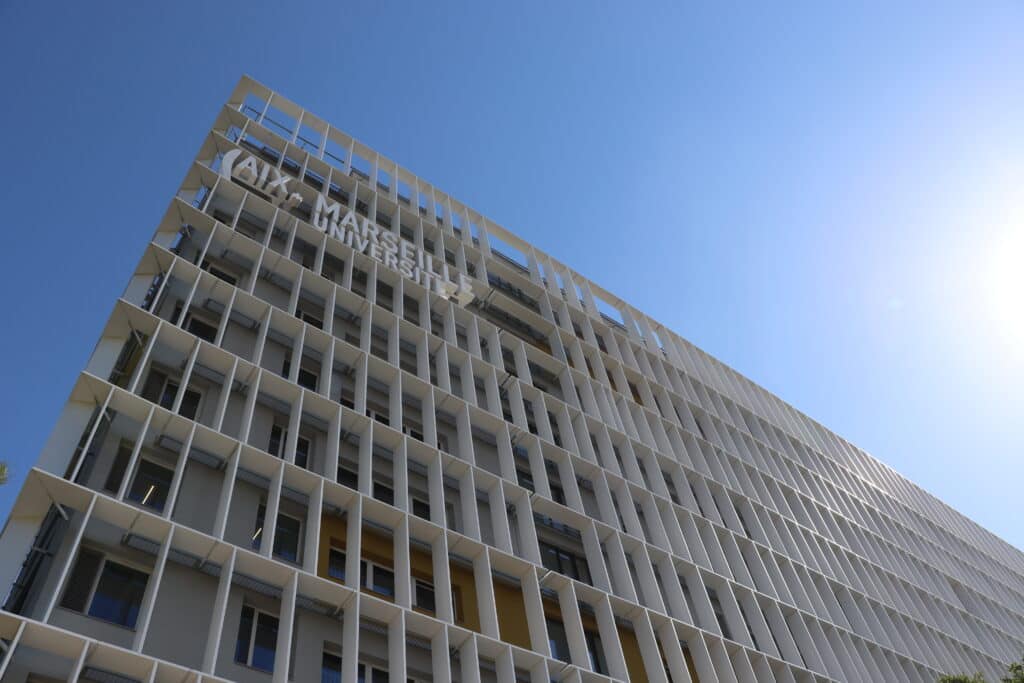You are here : Home City of energies > HOME BIAM > BIAM Presentation
BIAM
Bioscience and biotechnology Institute of Aix-Marseille
"Generate knowledge and develop green solutions in the field of low-carbon energy
or environmental monitoring and protection"
Internationally recognized in the field of environmental biology, the BIAM brings together the skills of 150 collaborators from its three divisions.
Its objective is to advance knowledge and develop biotechnological concepts, for example, in the field of soil and contaminated water decontamination (bioremediation), health or the production of high value-added molecules such as 3rd generation biofuels.
To achieve this, the Institute’s 9 teams are studying the response and adaptation mechanisms of our preferred biological models, namely bacteria, microalgae and plants, in the face of environmental constraints. This work is based on our technical platforms and our technological platforms but also on state-of-the-art laboratories, which were opened to employees in March, 2021.
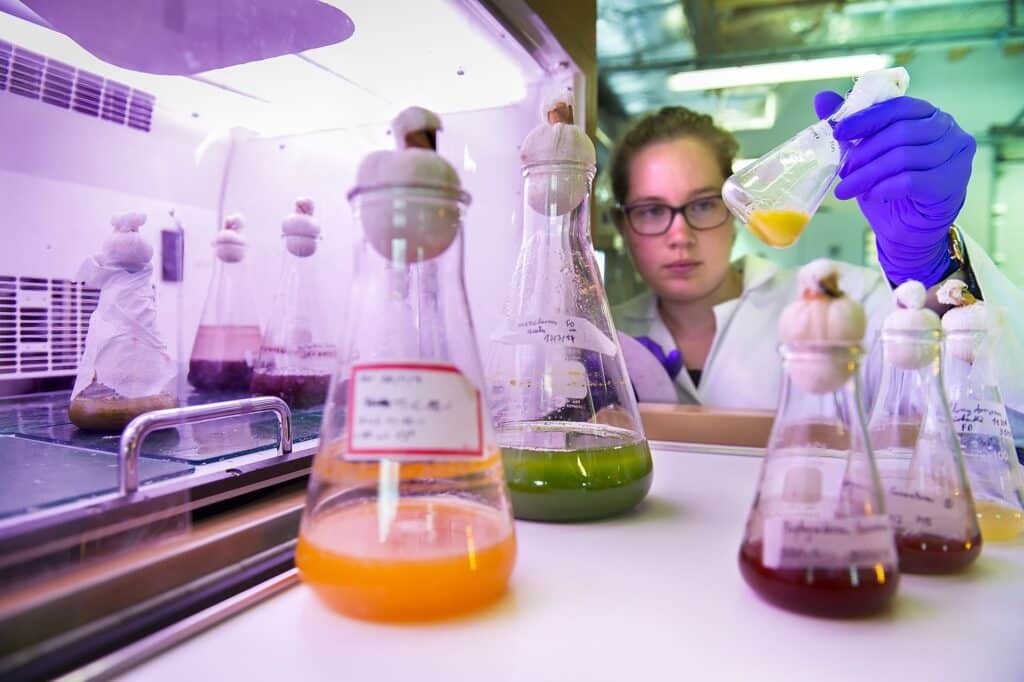
The BIAM in short
- 100 permanent staff from 3 research institutions and 50 CDDs, students and post-doctoral fellows.
- Numerous projects in collaboration with industrial partners (Orano, Total, Biogema, …)
- 35 ongoing projects funded by the ANR.
- BIAM is a member of AMU’s institute IM2B active in the fields of microbiology, bioenergy and biotechnology, a scientific structure at the regional ecosystem level.
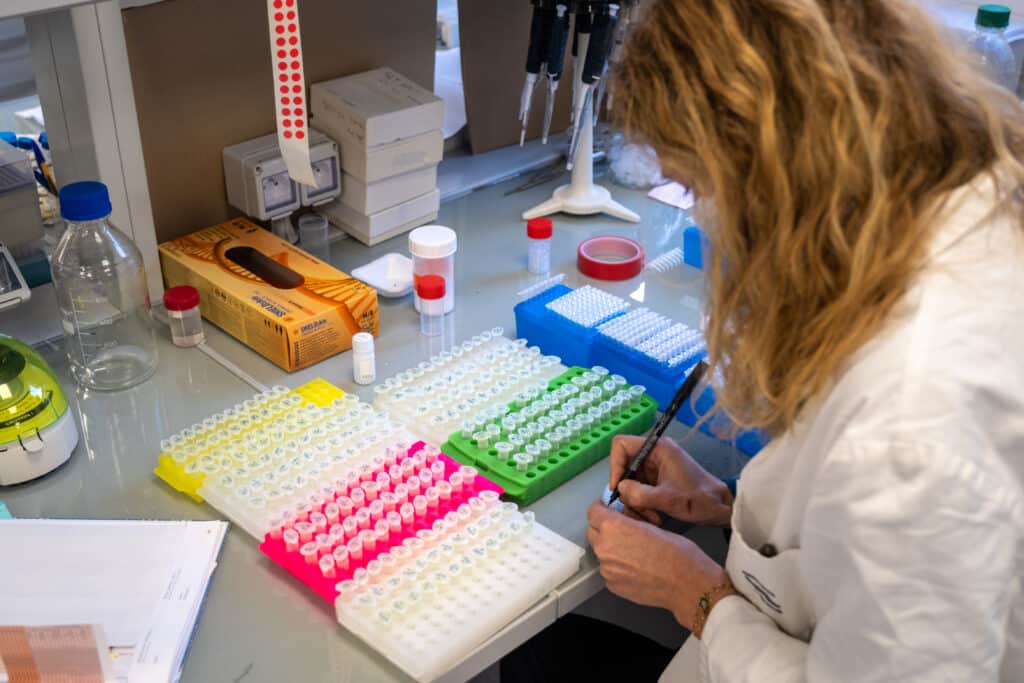
Scientific project
To achieve its scientific project, the BIAM has gradually built up a team of high-level researchers who produce numerous publications in the best peer-reviewed journals every year. Each successful research topic is the subject of a strategic study of valorization and whenever possible, the research project becomes technologically mature through collaboration contracts with leading economic partners such as ORANO, Roullier or Biogemma.
Our research topics
Most of these projects focus on two themes :
- “bioenergies”, i.e. the forms of energy stored in biomass. The research focuses on the biological mechanisms of conversion of atmospheric CO2 into small organic molecules (photosynthesis), and on the transformation of the latter into energy-rich molecules (lipids, starch, biohydrocarbons).
- the “response and adaptation of living organisms to environmental constraints” to understand and exploit these mechanisms in order to develop strategies to clean up contaminated soil and water. Plants and bacteria can thus be specialized in the conversion or storage of pollutants in their organism. This is the principle of bio-remediation.
The scientific challenges of BIAM
These two themes respond to 4 major issues included in the BIAM scientific project :
- Using the assets of microbial biodiversity for the development of green chemistry, sanitation and biotechnology ;
- Overcoming nutritional limitations in plants and algae through sustainable approaches ;
- Optimizing photosynthesis to make it more robust, efficient and sustainable ;
- To understand and optimize the mechanisms of adaptation of the metabolism of microalgae, plants and bacteria to environmental constraints to pave the way for the development of biotechnologies.
Report HCERES
BIAM received a very positive assessment of its performance over the period 2016-2022 from the HCERES, highlighting the excellence of the institute’s research activities and scientific output, as well as its involvement in major societal issues, both nationally and internationally. Its reorganization work and the development of its attractiveness were also praised. More recently, the institute’s project for the next five-year period was presented to its 3 supervisory bodies (CEA, CNRS and Aix-Marseille University). The BIAM’s dynamism was greatly appreciated, leading to the renewal of the institute for the next term.
Access the full evaluation report: click HERE

A new building in the Cité des Énergies,
and renovations of the laboratories at the Luminy campus
Delivered at the beginning of 2021, its strategic location in the immediate vicinity of CEA Cadarache and the ITER project, brings together the major players in the field of low-carbon energies within the same perimeter, since it brings together BIAM and its three divisions, CEA, CNRS and AMU, the regional technology transfer platform CEA Tech Région Sud, and all of the economic players in the future semi-open partnership zone “En’Durance Energies”.
The construction of the new BIAM building, equipped with the latest technologies, was financed by the 2014-2020 “Contrat de Plan État-Région ” (CPER) and “Fonds Européen de Développement regional” (FEDER), thanks to the creation of the Cité des Énergies.
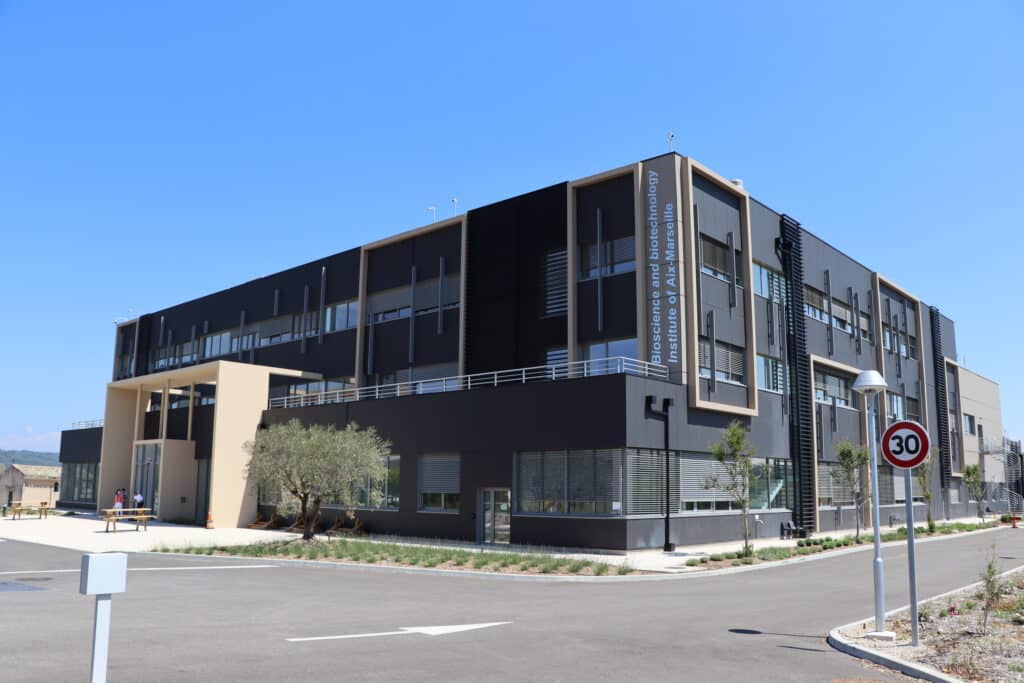
More than 7,500 m² now accommodate nearly 150 researchers, engineers, technicians and administrative staff, opening up even more to international collaborations with academic and/or industrial partners.
On the first floor, the main entrance reveals a reception area of nearly 400 m² intended for communication and the organization of industrial meetings, symposiums or conferences.
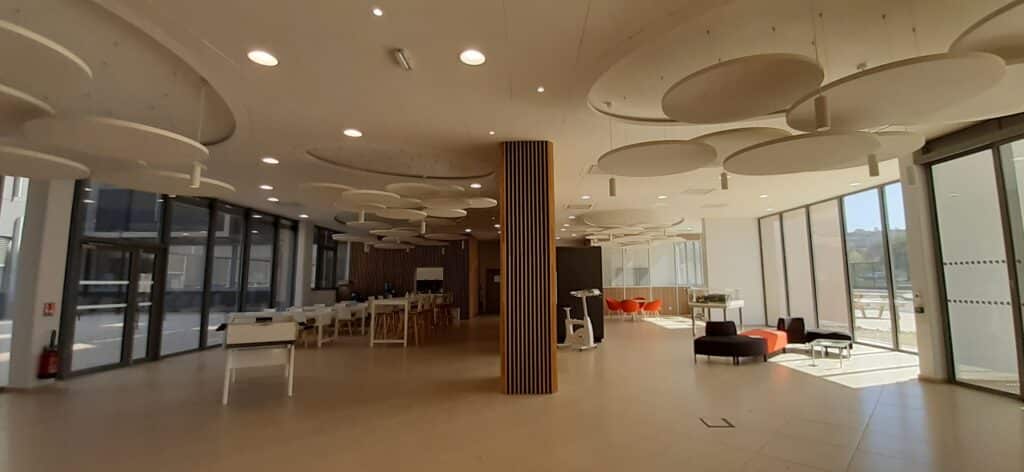
Composed of two large buildings, the first wing is dedicated to fundamental research, called BR for research building. The second wing, the BRD for research and development building, is structured around various instrumental and technological platforms with a wide range of cutting-edge equipment essential to the technological maturity of R&D projects. 170 m² of laboratories and 130 m² of office space are also dedicated to industrial partners who wish to evaluate and improve their industrial valorization process. This is the “Proof of Concept” project zone. In this area, promising research topics developed by or with BIAM that could be part of an industrial collaboration will be supported.
Near the “Proof of Concept” area, open-space is available to employees who wish to spin off their companies before embarking on an incubation process and then on an entrepreneurial adventure. It is within this framework that two BIAM researchers have already created their startups, which are now housed in the Pertuis business incubator.
In the heart of the Luminy campus, 1000 m² renovated for the LGBP team
Located about 80 km from the Cité des Énergies in the heart of the Massif des Calanques of Marseille, 1000 m² of laboratories are dedicated to the Luminy Plant Genetics and Biophysics team of BIAM (LGBP). Indeed, since 2010 Aix-Marseille University (AMU), which hosts our team, has undertaken major renovations of various structures in the context of the Plan Campus operation. The phase of major modernization work on three buildings was completed in early 2021, allowing the 19 members of our team to move in March 2021 to the penultimate floor of the main building of the university, doubling the surface area of its laboratories on this site. This large surface area will open the Institute’s capacity to host new international research teams.
